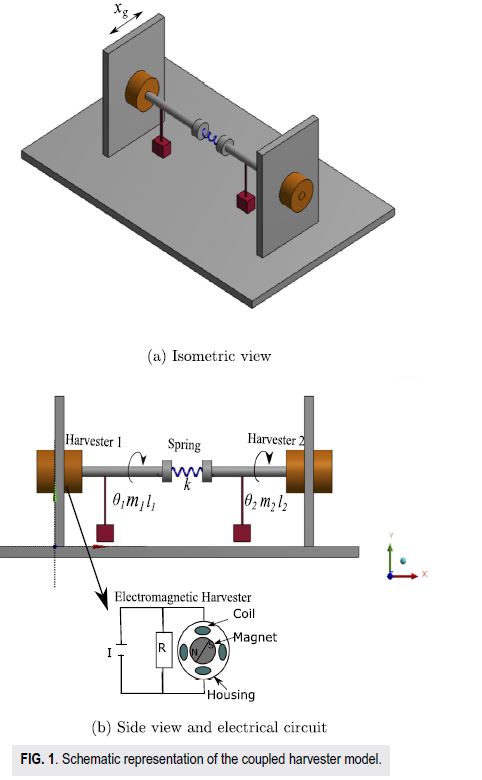Abstract:
Mechanical coupling in similar energy harvesters has the potential to enhance their broadband harvesting capability. However, often the performance of one harvester dominates the other, and the coupling transfers energy from the high frequency harvester to the low frequency harvester, thus reducing the capability of the high frequency harvester. Hence, researchers have proposed using the high frequency harvester only as an auxiliary oscillator to save the material cost. This paper investigates the possibility of enhancing the energy harvesting capability of
both coupled harvesters. A torsionally coupled electromagnetic pendulum harvester system is considered, which is suitable for low frequency (<5 Hz) applications. The harmonic balance method is used to identify possible multiple solutions, and high magnitude solutions are observed to coexist with low magnitude solutions. These high energy solutions, which are often missed in the numerical simulation, can be attained by a careful choice of initial conditions or energy input. The simulation results show that more energy can be harvested over a wider range of frequencies by ensuring that the response occurs in the high energy orbits. The results show an enhancement of the bandwidth by 54% and
140% for the low and high frequency harvesters, respectively, with the optimum initial conditions. Moreover, an isolated frequency island is reported, which occurs due to the coupling of the nonlinear harvesters

.
Authors: PV Malaji, MI Friswell, S Adhikari, G Litak
This paper was published in AIP Advances 10, 085315: 1-5 (2020)
To read full text, please visit publisher site or download pdf file.
 |  This work was supported by the program of the Ministry of Science and Higher Education in Poland under the project DIALOG 0019/DLG/2019/10 in the years 2019-2021. This work was supported by the program of the Ministry of Science and Higher Education in Poland under the project DIALOG 0019/DLG/2019/10 in the years 2019-2021. |